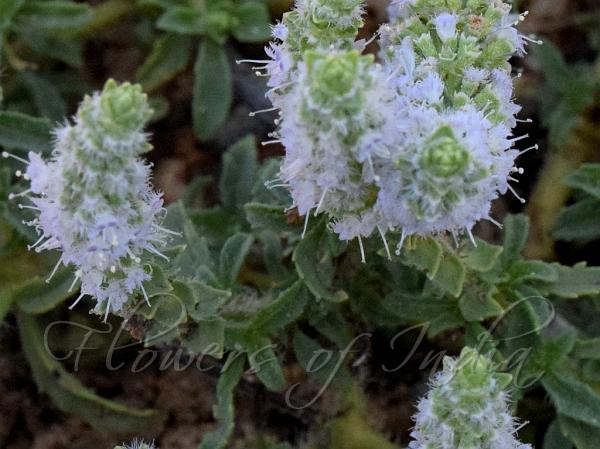|
| South Indian Thyme |
|

|

| File size | 222301 |
| Original date | 5/25/16 11:33 AM |
| Resolution | 1024 x 768 |
| Flash | Flash did not fire |
| Focal length | 90.0mm |
| Exposure time | 1/800s |
| Aperture | 14.0 |
| Focus Distance | |
| Metering Mode | Multi-segment |
| Camera make | NIKON CORPORATION |
| Camera model | NIKON D3300 |
| Sensor type | OneChipColorArea |
|
|
|
|
Photo: |
Botanical name: Platostoma menthoides Family: Lamiaceae (Mint family)
Synonyms: Elsholtzia ocimoides, Geniosporum prostratum, Thymus indicus Burm.f.
Synonyms: Elsholtzia ocimoides, Geniosporum prostratum, Thymus indicus Burm.f.
South Indian Thyme is a prostrate aromatic herb with
many slender stems, 1-1.5 ft long, arising from a woody rootstock.
Leaves are arranged in distant pairs, stalkless, or stalked, rather
thick, very variable, obovate-lanceshaped or oblong or linear, base
narrowed, sparingly toothed. They vary in size from 6 x 8 mm to 5 x 2
cm. Flowers are borne in slender, elongated spikes, in close or distant
whorls. Bracts are ovate, pointed, curled back. Flowers are
blue-purple, minute, stalked. Calyx is hairy, upper lip very variable
in size, throat hairy. Flowers are 1-2 mm, hairy, with stamens
protruding out. Fruiting calyx is 2 mm, almost bell-shaped, ribbed,
tube not pitted, velvet-hairy. Nutlets are extremely minute, ellipsoid,
smooth, naked. South Indian Thyme is found in Peninsular India and Sri
Lanka. Flowering: August-December.
Medicinal uses: South Indian Thyme has been
used traditionally in South India for common cold and as a febrifuge
for children. In Sriharikota Island in Andhra Pradesh, leaf decoction
is taken orally to get relief from fevers.
South Indian Thyme has been
used traditionally in South India for common cold and as a febrifuge
for children. In Sriharikota Island in Andhra Pradesh, leaf decoction
is taken orally to get relief from fevers.
Medicinal uses:
 South Indian Thyme has been
used traditionally in South India for common cold and as a febrifuge
for children. In Sriharikota Island in Andhra Pradesh, leaf decoction
is taken orally to get relief from fevers.
South Indian Thyme has been
used traditionally in South India for common cold and as a febrifuge
for children. In Sriharikota Island in Andhra Pradesh, leaf decoction
is taken orally to get relief from fevers. | Identification credit: S. Kasim | Photographed in Radhapuram, Tamil Nadu. |
• Is this flower misidentified? If yes,